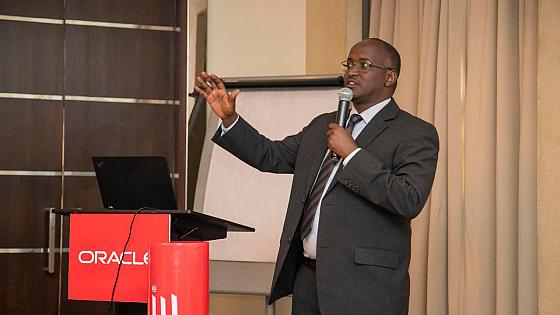Togo Partners ECA to Establish the African Cybersecurity Center
The Republic of Togo and the United Nations Economic Commission for Africa (ECA) are pleased to announce their signature of a memorandum of understanding (MOU) to collaborate on establishing the “African Center for Coordination and Research in Cybersecurity”.
As a central regional hub for cybersecurity information and intelligence based in Lomé (Togo), the center will act independently and objectively in expertise and activities related to promoting cybersecurity and the investigation of cybercrime.

Its missions will cover, but are not be limited to:
Building capacities and supporting established cybersecurity agencies in African countries
Read also : KnowBe4 and IDC Raise the Cybersecurity Flag in Sub-Saharan Africa
Collaborating with African governments, policymakers, law enforcement and security experts towards creating effective frameworks for assessing and mitigating cyber threats and promoting cybersecurity in the region
Providing highly specialized technical and research capabilities for cybersecurity promotion in the region
Hon. Cina Lawson Togo Minister of Digital Economy and Digital Transformation
On March 23 and 24, 2022, the 1st Cybersecurity Summit co-organized by the Republic of Togo and the ECA brought together Heads of State and Government, private sector leaders, and civil society leaders for a dialogue to address the pressing cybersecurity challenges of Africa.
During the summit, Member States adopted the “Lomé Declaration on cybersecurity and the fight against cybercrime” (Lomé Declaration).
The Lomé Declaration is a commitment by member states to sign and ratify the African Union “Malabo Convention” – one of the most elaborate conventions in the world on cybersecurity, and strengthen African cooperation in cybersecurity and the fight against cybercrime.
Read also : Persistent Energy Capital Raises $10M To Expand Its Off-grid Energy Business In Africa
As a result, the MOU between the Republic of Togo and ECA will enable the creation of the African Cybersecurity Center to support African countries in executing the Lomé Declaration.
To date, Togo is one of the few countries to have ratified the Malabo Convention. The country has implemented a legal and regulatory framework adapted to cybersecurity and established regulatory entities such as the National Cybersecurity Agency (ANCy) and the Personal Data Protection Authority (IPDCP).
Moreover, In partnership with Asseco Data Systems, a Polish cybersecurity company, the Togolese Republic has set up a cybersecurity service company – Cyber Defense Africa (CDA), composed mainly of Togolese, for the protection of its cyberspace while ensuring a transfer of skills.
Hon. Cina Lawson, Minister of Digital Economy, said, “We are pleased to partner with ECA to further our commitment to making cybersecurity a top priority for our nations.
We aim to become a significant digital hub in Africa. Our partnership model with the private sector is an innovative approach that we want to showcase to inspire other countries for safer cyberspace on the continent.”
The Under-Secretary-General of the United Nations and Executive Secretary of ECA, Dr Vera Songwe, said, “It is important to promote coordinated cybersecurity approaches in Africa.
Read also : Fintech Startups In Morocco Now Have Easier Way Of Dealing With Capital Market Authority. Here’s How
UNECA is further strengthened in its determination to promote cybersecurity in the region to advance the African digital economy, and we are pleased to partner with the Government of Togo to ensure that a key commitment derived from the Lomé Declaration on Cybersecurity and Fight Against Cybercrime, 2022 is now to be commenced”.
Kelechi Deca

Kelechi Deca has over two decades of media experience, he has traveled to over 77 countries reporting on multilateral development institutions, international business, trade, travels, culture, and diplomacy. He is also a petrol head with in-depth knowledge of automobiles and the auto industry












